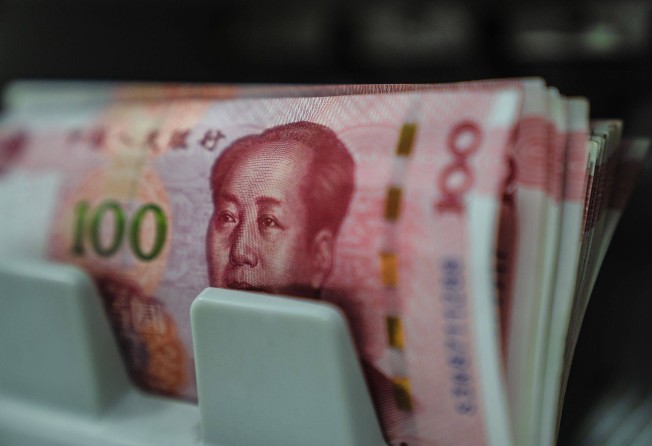China’s yuan falls to lowest level against US dollar since 2008 global financial crisis
- China’s onshore yuan closed at 7.2494 per US dollar on Friday, representing the weakest close since January 14, 2008
- Reports said Chinese state-owned banks were seen selling US dollars in the onshore foreign exchange market on Friday in an apparent attempt to stabilise the currency

China’s yuan resumed its weakening trend against the US dollar on Friday, finishing the domestic session at the weakest level since the global financial crisis of 2008 as the US dollar soared on heightened expectations of more interest rate increases.
The yuan gained some support on Thursday after a Bloomberg report that China is considering reducing the coronavirus quarantine time for inbound travellers, citing unidentified sources, though other details were scant.
Prior to the market opening on Friday, the People’s Bank of China (PBOC) set the midpoint rate at 7.1186 per US dollar, 2 pips firmer than the previous fix 7.1188.
In the spot market, the onshore yuan opened at 7.2320 per US dollar and was changing hands at 7.2462 at midday, 302 pips weaker than the previous late session close and 1.8 per cent softer than the midpoint.
It eventually closed at 7.2494 per US dollar, representing the weakest close since January 14, 2008.
Traders said yuan weakness may persist, reflecting broad US dollar strength in global markets as US Federal Reserve officials showed no signs of backing down from their hawkish rhetoric.
Major Chinese state-owned banks were seen selling US dollars in the onshore foreign exchange market on Friday, four banking sources with direct knowledge of the matter said, in an apparent attempt to stabilise the local currency.
The US dollar selling was aimed at preventing spot yuan from breaching the key 7.25 per US dollar level, the sources said, noting the local unit was weakening towards its daily downside limit.
The state banks’ actions were meant to stabilise the market, one of the sources said. The moves come at a time when China’s Communist Party is holding its 20th party congress.
The sources declined to be identified as they were not authorised to speak on the matter.
On Monday, state banks were also spotted swapping yuan for US dollars in the forwards market and selling those dollars in the spot market, according to sources.
State banks usually trade on behalf of the central bank in China’s foreign exchange market, but they can also trade for their own purposes or execute orders for corporate clients.
I think China will allow the depreciation trend to resume and the fixing will climb again soon after the party congress
Around 90 per cent of the 30 yuan traders who responded to a Bloomberg survey this week forecast the PBOC will ease its tight-ranged fixing after the 20th party congress wraps up on Saturday.
Half said they expect the yuan to be pushed to 7.4 or even 7.5 per US dollar within the year, and only 10 per cent saw it staying at around the current level of about 7.25.
“I think China will allow the depreciation trend to resume and the fixing will climb again soon after the party congress,” said Alvin T. Tan, head of Asia FX strategy at RBC Capital Markets.
Chinese authorities have continued to set firmer-than-expected yuan guidance in a bid to keep the currency stable amid the ongoing 20th party congress, market participants added.
The stronger daily guidance, which allows the onshore yuan to trade in a narrow range of 2 per cent on either side of the midpoint, has effectively capped the downside limit for the yuan, said a trader at a foreign bank.
Friday’s fixing allowed the onshore yuan to trade in a range of 6.9762 to 7.2610, and the midday price was less than 0.2 per cent away from hitting the lower end of the trading band.
“The US$/[offshore yuan]-US$/[onshore yuan] premium could be widening more persistently given the strong fixing bias that caps the onshore,” analysts at Maybank said.
“Such signs of depreciation pressure could also spill over to regional [emerging market foreign exchange],” they said, noting Friday marked the 13th straight session that the PBOC set “almost flat” midpoint guidance.
The offshore yuan, which trades more freely to reflect market expectations, was trading at 7.2640 per US dollar as of midday, 0.25 per cent weaker than its onshore counterpart.